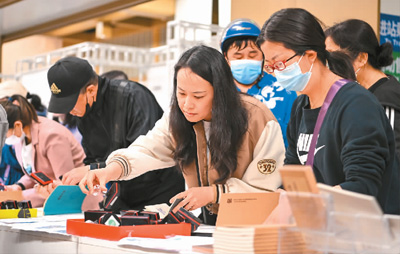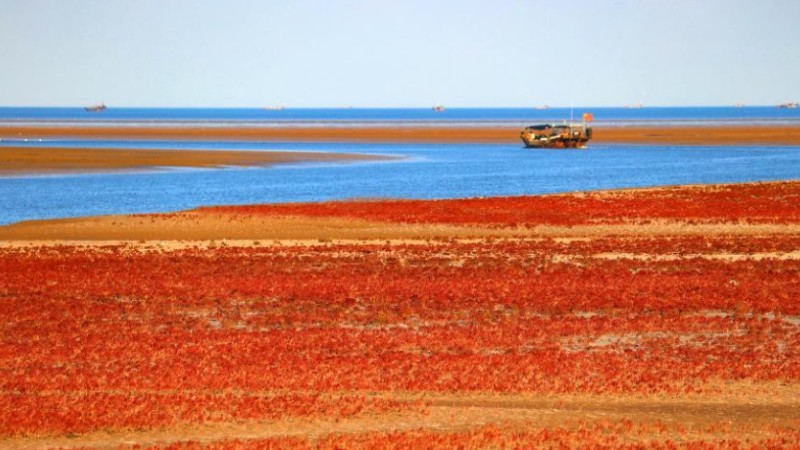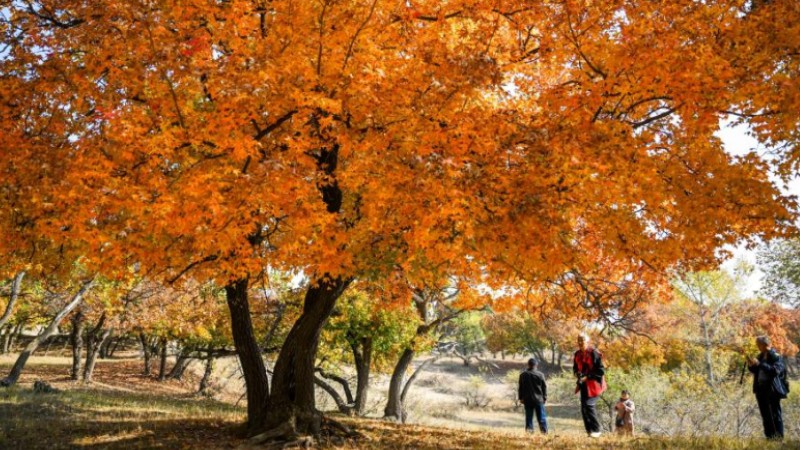Stamp collecting grows in popularity among tourists

Local residents collect stamps at a Taiyuan Subway Line 2 station in Taiyuan, north China's Shanxi Province. (Xinhua/Yang Chenguang)
During the eight-day combined Mid-Autumn Festival and National Day holiday this year, stamp collecting emerged as a favored cultural and tourism activity.
The rise in popularity can be credited to cultural venues and tourist attractions offering themed stamps. These stamps often showcase iconic structures, figures, and text related to specific sites.
Industry experts note that major museums, memorial halls, and cultural zones in China typically offer two types of stamps: permanent ones available year-round and activity stamps available only on specific occasions. These stamp can be either free or charged.
Different venues impose varying rules for collecting stamps. Typically, a minimum spending amount is established, and some sites may necessitate the purchase of commemorative stamp card sets or particular items to receive stamps.
For many, the appeal of stamp collecting is the sense of involvement and accomplishment it provides.
Nowadays, stamps are more carefully designed and exquisitely made.
Ji Ruotong, from Shaanxi Province in northwest China, shared that a red stamp depicting the Chang'an city of the Tang Dynasty (618-907), recognized for its square and symmetrical design, remains her most cherished since she began collecting two years ago.
"The 25 intersecting streets and 108 blocks are clearly visible on the stamp, with famous scenic areas such as the Qujiang Pool and the Tang Paradise located in the southeastern part of the city," Ji said.
She also noted that Tang Paradise's stamp variety has expanded, and its gift shop now offers stamps featuring Tang Dynasty women and fishponds, emphasizing intricate engravings.
Some museums and tourist attractions in China have introduced multicolor stamps, where a complete pattern can only be created by combining several stamps in a specific order, according to Ji, adding that this makes collecting stamps more interesting.
Stamp collecting remains a budget-friendly and widely accessible pastime, with both free self-stamping and paid options available.
"When I visited the Huangshan Mountain Scenic Area, I purchased a fridge magnet for about 20 yuan ($2.74). With a consumption voucher from any souvenir shop in the scenic area, I was able to obtain stamps from other stores within the vicinity," shared Wang Yuxin, a student in Shanghai.
Wang's collection book boasts stamps from notable locations such as the Shaanxi History Museum, Harbin Museum, and Shanghai Library.
There are various ways to find stamps. Numerous places have shifted from openly offering stamps to concealing them, turning patrons into "treasure hunters" and introducing an exciting facet to the stamp collection journey.
As the stamp-collecting craze continues to heat up, museums and historical sites throughout China consistently introduce new themed stamps and collection guides.
For example, Nanjing Museum has set up signs for each offline stamp collection point. Specific details about a stamp modeled after the Great Universal Geographic Map, one of the museum's most influential cultural relics, is highlighted with a blue box on the signs.
During peak visiting times, the museum promptly updates stamp collection details on digital platforms, including its official WeChat account and website.
Additionally, the museum has unveiled a range of cultural and innovative products that have gained significant attention from visitors.
Xiong Haifeng, an associate professor at the Communication University of China, observes that stamps serve as tools for tourist engagement, vessels for experiences, and reminders of memories. He added that tourists increasingly value active participation and memorable travel moments.
The rising popularity of stamp collecting mirrors the trend toward seeking affordable yet enriching experiences. Xiong also notes that this trend favors compact, beautifully designed cultural and creative products.
Photos
Related Stories
Copyright © 2023 People's Daily Online. All Rights Reserved.









